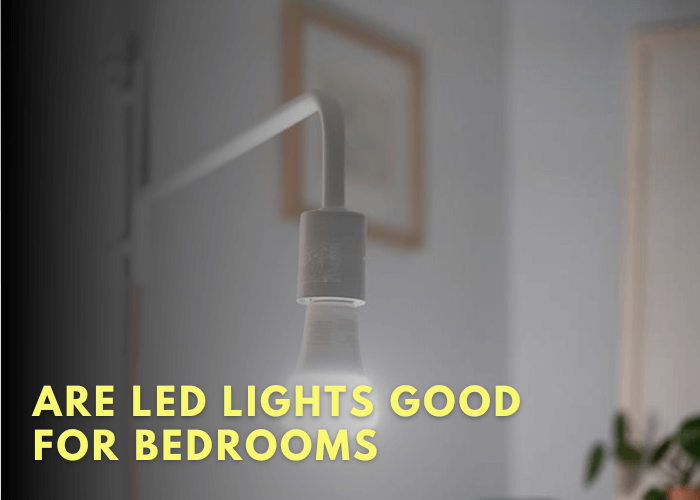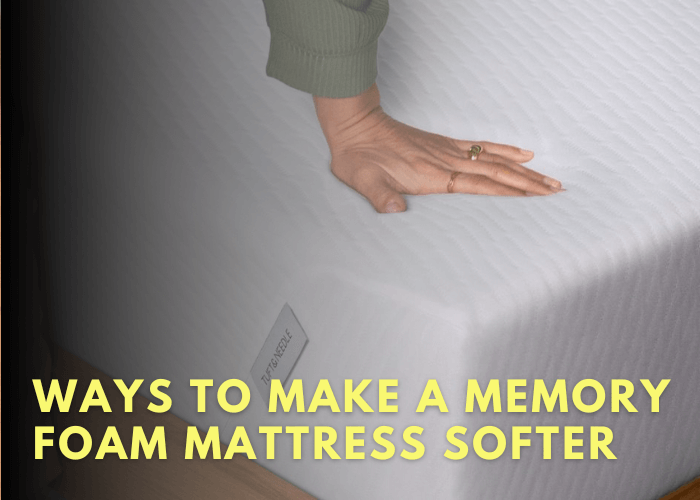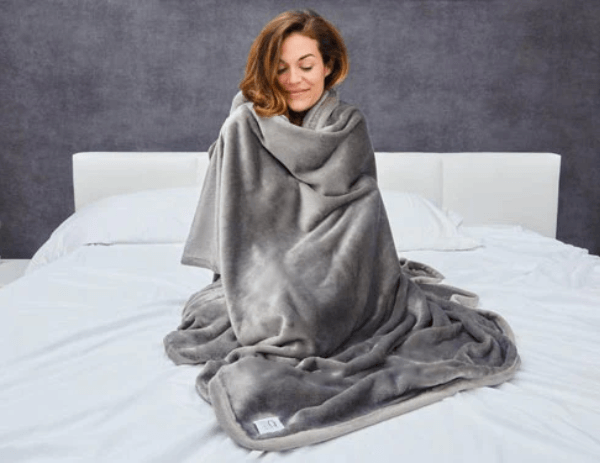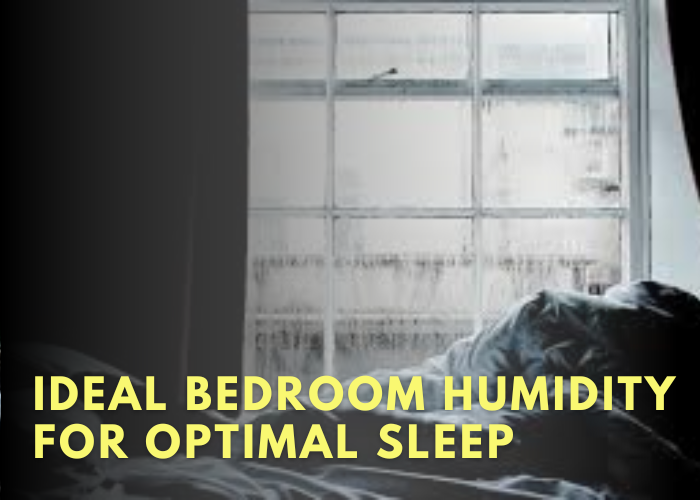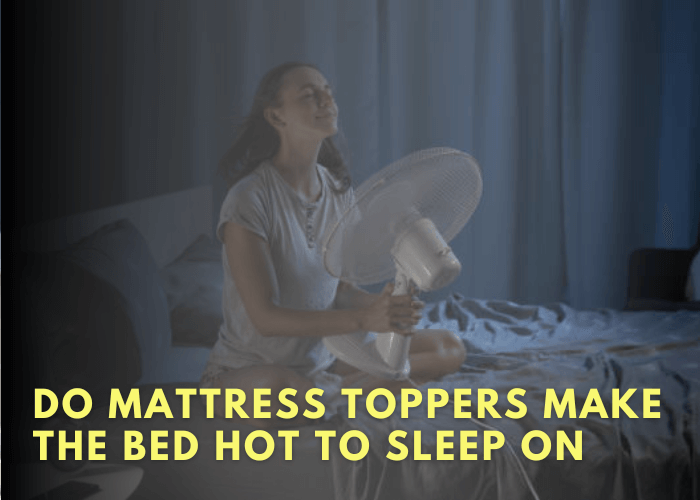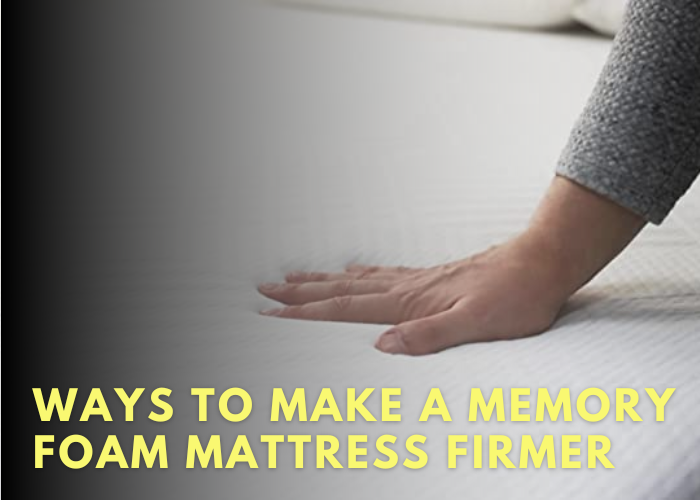LED lights are becoming increasingly popular in bedrooms. LED lights have been around for a few decades, but they have only recently become widely used in home lighting fixtures. LEDs are more efficient and cost-effective than traditional incandescent bulbs. Can they be used in bedrooms?
The answer lies in understanding how LED lights work and what their impact is on our sleep patterns.
In this article, we’ll explore the advantages and disadvantages of LED lighting in bedrooms and examine what’s best for achieving a good night’s rest.
So if you’re considering introducing LEDs into your bedroom, keep reading to find out more.
What Are The Advantages

LED lights are an increasingly popular choice for bedrooms, with over 80% of bedroom lighting fixtures now LED in the US. They offer a range of advantages, making them an attractive option.
First, they’re energy efficient. LEDs use up to 90% less electricity than traditional incandescent bulbs and can last up to 25 times as long.
This means lower electricity bills for homeowners – great news for everyone’s wallet! Plus, LED lights don’t need replacing as often, meaning less hassle and fewer trips to the store.
Second, LEDs emit very little heat compared to other bulbs like halogens or fluorescent tubes.
This makes them ideal for bedrooms where the ambient temperature needs to remain low or consistent throughout the night. And since they don’t get hot, there’s no need to worry about burning yourself or your bedding when you change the bulb – another bonus!
Finally, LEDs come in a variety of colors and styles so you can customize your bedroom lighting just the way you like it – dimmable warm whites for relaxing evenings or bright cool whites for working late into the night.
There’s something out there that suits everyone’s individual needs and preferences.
LED lights in bedrooms offer many advantages but they also have some drawbacks which should be considered before making a purchase decision.
What Are The Disadvantages
Truly, LED lights are like a blessing from the heavens when it comes to bedrooms. But, even with its many benefits, there are still some drawbacks that everyone should keep in mind before they make a purchase.
Let’s take a closer look at the disadvantages of LED lights in bedrooms.
Firstly, LED lights tend to be quite expensive compared to traditional lighting options.
This isn’t always an issue for those who can afford it, but for people on a budget, this can be an insurmountable problem.
In addition to being more expensive upfront, LEDs also have higher energy costs over time than traditional bulbs–which means you’re spending more money in the long run than you would otherwise.
Another issue is that LEDs can sometimes flicker and create uncomfortable shadows in your bedroom.
This won’t be a problem for most people, but if you’re sensitive to light or have any other issues with your vision then this could end up being more trouble than it’s worth.
Lastly, because of their design and dimming capabilities, LEDs can produce a harsh white light that may not be ideal for relaxing before bedtime or winding down after a long day at work.
LEDs may seem like the perfect solution for brightening up your bedroom but there are definitely some things to consider before making the switch–particularly if you’re trying to save money or enjoy subtle lighting effects instead of bright white light all night long.
What Types Of Led Lights Are Best For Bedrooms

Led lights are becoming more common in bedrooms. But what types of led lights are best? That depends on the room and the person’s needs.
Brightness and color temperature are two main factors to consider. Brightness is measured in lumens, while color temperature is measured in Kelvin.
Warmer colors, such as yellow and orange, have a lower Kelvin rating than cooler colors like blue and green.
When thinking about brightness, it’s important to get enough light for activities such as reading or getting dressed. But too much brightness can be overwhelming and make it difficult to sleep at night.
Color temperature should also be considered when picking led lights for bedrooms; warm colors create a cozy atmosphere while cooler colors can help energize people in the morning.
It’s important to find a balance between these two factors that suits your personal needs.
Knowing what variables to consider when choosing led lights for bedrooms will help you make an informed decision about which type of lighting is best for you.
What Variables Should Be Considered
The soft, inviting glow of LED lights can transform any bedroom from plain to luxurious. But with so many types and styles, it’s important to consider a few variables before making the purchase.
When choosing LED lights for bedrooms, the first thing to consider is brightness.
Too dim and you won’t have enough light for reading or other activities. Too bright and it might be hard to sleep in such an intense environment.
Soft white tones are often preferred as they’re easier on the eyes and provide a calming atmosphere.
Next, think about the size of the room and how much lighting you’ll need. If your space is small, then maybe all you need is one or two statement pieces that will add color or atmosphere without overwhelming the area.
On the other hand, if your room is large then multiple fixtures may be necessary to evenly spread out light across all areas.
Finally, pay attention to energy efficiency when selecting bulbs: LEDs have a longer lifespan than traditional incandescent bulbs so you’ll save money in the long run.
LED lights can make any bedroom look more inviting – just remember to take into account brightness, size of the room, and energy efficiency when deciding which ones are best for you.
How To Install Led Lights In Bedrooms
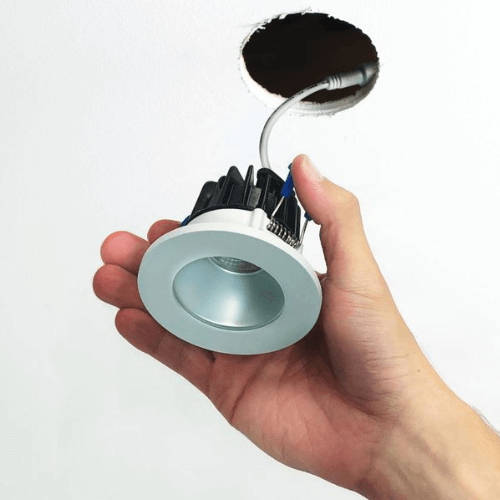
Installing LED lights in bedrooms is a modern way to make an impact on the ambiance of your room.
Like a painter with brush strokes, you can create vibrancy and energy with strategically placed LED lights. You can create a space that is both inviting and stylish.
The process of installation is straightforward, although there are some variables to consider. Firstly, think about the size and shape of the room as these will determine how many bulbs you need for adequate lighting.
It’s also important to consider which type of LED light will work best for your space – whether it be recessed or wall-mounted lights.
Lastly, take into account what kind of design you want to achieve with your LED lights – is it a spot-lighting effect, or a more subtle wash?
Once you have chosen the right type of LED light for your bedroom, all that remains is the installation itself.
Begin by measuring and marking out where each light should go – this will ensure accuracy during the installation process. Then carefully wire up each bulb according to the instructions provided; this may require assistance from an electrician if you don’t feel comfortable doing it yourself.
Finally, switch on your newly installed LED lights and marvel at their brilliance!
Are They Cost Effective?
LED lights are a great way to save energy and money. But, it’s important to use them cost-effectively in bedrooms. Here’s how:
First, choose LED bulbs that are the right size and shape. That way, they’ll fit into your existing fixtures and won’t require any extra wiring or installation. Also, be sure to get bulbs with the right color temperature for your room.
Second, use dimmers when possible. This is especially important if you’re using LED lights as task lighting in the bedroom.
Dimming can help adjust the light level so that it’s comfortable but not too bright or too dim.
Plus, you’ll be able to save even more energy when you dim the lights during times when they aren’t needed.
Finally, consider adding motion sensors if possible.
Motion sensors allow you to turn on and off lights automatically as people enter and leave rooms, which can help reduce energy usage especially in bedrooms where people may forget to turn off the lights when leaving.
Using these tips will help ensure that you’re getting the most out of your LED lights without breaking the bank.
What Color Temperature Is Best
Have you ever wondered what color temperature is best for LED lights in bedrooms? It’s a common question among those looking to cost effectively use LED lighting in their homes.
Well, I’m here to tell you that the answer isn’t straightforward.
Different people prefer different temperatures in their bedrooms, so it’s important to consider the right combination of factors.
Warmer light is more inviting and cozy, while cooler light can be great for reading and studying.
There are even color-changing bulbs available that allow you to adjust the temperature according to your preference.
When deciding on an appropriate color temperature, there are several things to consider such as the size of the room, existing furniture and wall colors, and how much natural light comes in during the day.
You should also think about whether you’ll be using the room mostly for relaxation or productivity purposes.
Ultimately, it comes down to personal preference but understanding what kind of effects different temperatures have can help you make a decision that suits your needs best.
What Is The Life Span Of LED Lights
Led lights are a great way to light up your bedroom. They’re energy-efficient, long-lasting, and come in a variety of colors. But how long do they last? That’s an important question to consider when choosing lighting for your bedroom.
The life span of LED lights in bedrooms is generally around 25,000 hours. This is much longer than the 1,000 to 2,000 hours of life you can get from traditional incandescent bulbs. LED lights also produce less heat than other types of lighting, making them ideal for bedrooms as well.
The longevity and energy efficiency of LED lights make them an attractive option for bedrooms. While they may cost more upfront than other types of lighting, the savings in electricity costs over time can be significant.
Plus, with their long lifespan, you won’t have to worry about replacing them often.
LED lights offer a great option when it comes to bedroom lighting.
However, it is important to take safety precautions when using them and ensure they are installed correctly so they don’t pose a fire or electric shock risk.
Safety Precautions
Safety is paramount when it comes to LED lights in bedrooms. It’s as essential as breathing, and should never be overlooked.
While LED lights are incredibly energy-efficient and bright, they must be handled with care. They can be a dazzling addition to any bedroom if the proper precautions are taken.
First, these lights should always be connected to a dimmer switch for more control over their brightness.
This will help reduce eye strain and ensure that you don’t have too much light in your bedroom at night when you’re trying to sleep.
Additionally, make sure the lights are properly secured, either by using clips or mounting them on the wall or ceiling. You don’t want them falling down while you’re sleeping!
Finally, use caution when handling the bulbs themselves.
Although LEDs don’t produce heat like incandescent bulbs do, they can still become hot if left on for extended periods of time.
Wear gloves when changing out the bulbs and use extreme care not to break them—the tiny shards of glass could cause injury.
What Are The Latest Trends For Led Lights In Bedrooms
Led lighting has become increasingly popular in bedrooms over recent years. In fact, according to a survey by the American Lighting Association, almost 80% of American homeowners now use LED lighting in their bedrooms. This trend is largely due to their energy-efficiency and longevity.
LED lights have the potential to transform your bedroom into an inviting space with the latest technology. Here are three of the top trends for using LED light in bedrooms:
- Accent lighting – using LED lights as accents to highlight certain features can create an inviting atmosphere.
- Modern wall sconces – wall sconces are making a comeback and look beautiful when combined with LED lighting technology.
- Colorful fixtures – adding color to your bedroom with colorful LED fixtures can make it stand out from the rest and create a unique atmosphere.
LED lights can be used to create a beautiful atmosphere in any bedroom, while also being energy efficient and long lasting.
There are many ways you can incorporate LED lights into your bedroom design and make it feel like home. It’s time to take advantage of this functional and stylish lighting option!
Frequently Asked Questions
What Is The Difference Between Led Lights And Other Types Of Lights For Bedrooms?
Searching for the perfect lighting for your bedroom can be a daunting task. It takes consideration of several factors to make the best decision.
With so many options available, it’s important to understand the difference between LED lights and other types of lights for bedrooms. LEDs have many advantages:
1. They are energy-efficient and run cool
2. They offer long-lasting illumination
3. They require minimal maintenance
These features make them an attractive option for bedrooms. They provide sufficient light that is easy on the eyes and can last for years without needing replacement. Furthermore, LED lights do not contain toxic elements like mercury, making them a safe choice in any home environment.
Additionally, they cast a soft glow that creates a comfortable atmosphere in bedrooms. LEDs come in a variety of styles and colors, allowing you to customize the look of your bedroom according to your personal preference.
You can choose from dimmable bulbs or spotlights depending on your needs. This versatility allows you to create a unique lighting experience tailored to your own taste.
LEDs have become increasingly popular over time due to their many benefits when compared to other types of lighting solutions for bedrooms. Their energy efficiency, long-lasting illumination, and minimal maintenance requirements make them an excellent choice for any bedroom space.
Are LED Lights Safe For Children In Bedrooms?
LED lights are becoming increasingly popular for bedrooms due to their energy efficiency and affordability. But are they safe for children?
LED lights don’t contain hazardous materials, such as mercury, so they’re less of a health risk than traditional bulbs. Plus, LED bulbs don’t get hot like other types of light bulbs, so they won’t burn your child if touched.
However, it’s important to be aware that blue-rich LED lighting can disrupt sleep patterns. If your child is in the bedroom late at night or early in the morning, it’s best to avoid this type of lighting or use dimmers to tone down the brightness.
TIP: When shopping for LED lights for your child’s bedroom, make sure to look for ones with warm color temperatures (2700K – 3000K). This will ensure that your child can get the best night’s rest possible.
Are Led Lights Energy Efficient?
Led lights are becoming increasingly popular for bedrooms. Shockingly, about 75% of the world’s lighting energy is still used by traditional light sources. Yet, led lights are up to 80% more energy efficient than these traditional light sources.
This means that when you switch to led bulbs, you save money and reduce your carbon footprint. It also means you can use less wattage for the same level of lighting, which helps keep bills low. Plus, since led lights last up to 50 times longer than traditional bulbs, you won’t have to replace them as often.
The efficiency of led lights makes them ideal for bedrooms. Not only do they help save money in the long run, but they also create a warm and inviting atmosphere without using too much energy.
This makes them a great choice if you want to make your bedroom look beautiful while still being conscious of your budget and the environment.
Conclusion
LED lights are a great choice for bedrooms. They offer a safe, energy-efficient, and cost-effective option that’s perfect for any room.
Not only are they dimmable, but they come in different color temperatures to give you the perfect lighting for whatever mood you’re trying to achieve.
If you’re looking for a great way to light your bedroom without breaking the bank or compromising on quality, LED lights are definitely worth considering.
You can rest assured that your children will be safe from hazardous materials and that your power bill won’t suffer too much from extended use.
I’m confident you’ll be happy with the results!
My own experience with LED lights has been nothing but positive. From saving money on my bills to creating an inviting atmosphere in my bedroom, it’s been a great investment overall.
If you’re looking for an efficient and affordable way to light up your bedroom, LED lights are definitely something worth considering.

